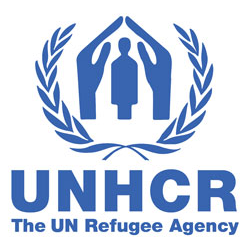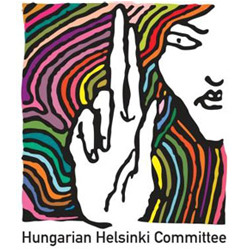Main Debates
- Does suffering the violation of humanitarian law entitle one to refugee status?
- What are the obligations of the international community to ensure protection of refugees in camps from military attacks?
Main Points
- Actors for protection
- Nexus between international refugee law and international humanitarian law
Treaties
- Fourth Geneva Convention Relative to the Protection to Civilian Persons in Time of War, 12 August 1949, 75 U.N.T.S. 287, Arts 27, 35, 44, 45, 46, 70 (special protection for women).
- Convention Relating to the Status of Refugees, 28 July 1951, 189 U.N.T.S. 150, Art. 9. Protocol Relating to the Status of Refugees, 4 October 1967, 606 U.N.T.S. 267.
- Additional Protocol I to the Geneva Conventions, 8 June 1977, 1125 U.N.T.S. 3.
- Additional Protocol II to the Geneva Conventions, 8 June 1977, 1125 U.N.T.S. 609.
- Convention on Cluster Munitions, 30 May 2008.
Soft Law
- 31st International Conference of the Red Cross and Red Crescent, ’Resolution on Strengthening Legal Protection for Victims of Armed Conflicts’, 1 December 2011.
- UN Security Council, ‘Report of the Secretary-General on the Protection of Civilians in Armed Conflict’, 22 November 2013.
- UNHCR EXCOM, ‘Conclusion on the civilian and humanitarian character of asylum’, Conclusion No. 94 (LIII), 2002.
UNHCR and ICRC Documents
- ICRC, ’Strengthening legal protection for victims of armed conflicts – Report’, 31st International Conference of the Red Cross and Red Crescent, Geneva, October 2011.
- UNHCR, ’Lessons from Arusha and Cape Town: UNHCR’s Perspective on the Relationship between IHL and International Refugee Law’, (paper presented by Alice Edwards, Senior Legal Coordinator, UNHCR, at the RSC and RLI conference, All Souls College, Oxford), 12 February 2012.
- UNHCR, ’International Protection for Persons Fleeing Armed Conflict and Other Situations of Violence: Summary Conclusions from Expert Roundtable’, 20 December 2012.
- UNHCR, ’Better Protected? Stabilisation Strategies and the Protection of Civilians’, 25 March 2011.
- UNHCR, ’Summary Conclusions on the interpretation of the extended refugee definition in the 1984 Cartagena Declaration’; Roundtable 15 and 16 October 2013, Montevideo, Uruguay, 7 July 2014.
- UNHCR, ’Summary Conclusions on International Protection of Persons Fleeing Armed Conflict and Other Situations of Violence’; Roundtable 13 and 14 September 2012, Cape Town, South Africa, 20 December 2012.
- UNHCR, ’Operational Guidelines on Maintaining the Civilian and Humanitarian Character of Asylum’, September 2006.
- UNHCR, ’A UNHCR Handbook for the Military on Humanitarian Operations’, January 1995.
- UNHCR, ‘Note on the Protection of Refugees in Armed Conflict Situations’, 4 October 1982.
- UNHCR, ‘Note on Military and Armed Attacks on Refugee Camps and Settlements’, 10 August 1987.
Cases
- ICTY, Milosevic, Slobodan, Trial Chamber Decision, IT-02-54-T, decision of 16 June 2004 (on deportation and forcible transfer as grave breaches of the Geneva Conventions and crimes against humanity).
Readings
Core
- H. Lambert and T. Farrell, ‘The Changing Character of Armed Conflict and the Implications for Refugee Protection Jurisprudence’, International Journal of Refugee Law, vol. 22, no. 2 (2010), pp. 237–273.
- V. Holzer, The 1951 Refugee Convention and the Protection of People Fleeing Armed Conflict and Other Situations of Violence, September 2012, PPLA/2012/05.
- S. Jaquemet, ‘The Cross-Fertilization of International Humanitarian Law and International Refugee Law’, International Review of the Red Cross, vol. 843 (September 2001), pp. 651–674.
- V. Chetail, 'Armed Conflict and Forced Migration - A Systematic Approach to International Humanitarian Law, Refugee Law, and International Human Rights Law', in A Clapham and P Gaeta (eds) International Law in Armed Conflict, (Oxford: Oxford University Press, 2014), pp. 700-734.
- T. Farrell and O. Schmitt, The Causes, Character and Conduct of Armed Conflict, and the Effects on Civilian Populations 1990-2010, April 2012, PPLA/2012/03, [Part of the Legal and Protection Policy Research Series for the Division of International Protection].
Extended
- B. Rutinwa, ’Refugee Claims Based on Violation of International Humanitarian Law: The 'Victim’s' Perspective’, Georgetown Immigration Law Journal, vol. 15 (2001), pp.497-517.
- H. Lambert, ‘Causation in International Protection from Armed Conflict’, in D. J. Cantor and J-F. Durieux Refuge from Inhumanity? War Refugees and International Humanitarian Law, (Brill/Nijhoff, 2014), pp. 57-78.
- H. Lambert, ‘The Next Frontier: Expanding Protection in Europe for Victims of Armed Conflict and Indiscriminate Violence’, International Journal of Refugee Law vol.25 (2013), pp. 207-234.
- Human Rights Watch, ‘Meeting the Challenge: Protecting Civilians through the Convention on Cluster Munitions’, 22 November 2010.
- J.P. Lavoyer, ‘Refugees and Internally Displaced Persons: International Humanitarian Law and the Role of the ICRC’, International Review of the Red Cross, vol. 305 (April 1995), pp. 162–180.
- S. Ojeda, ‘Kampala Convention on Internally Displaced Persons: Some International Humanitarian Law Aspects’, Refugee Survey Quarterly, vol. 29, no. 3 (2010), pp. 58–66.
- A.C. Trindade, ‘Approximations and Convergencies Revisited: Ten Years of Interaction Between International Human Rights Law, International Refugee Law, and International Humanitarian Law’, in G. Cohen-Jonathan and J.-F. Flauss (eds), Le Rayonnement International de la Jurisprudence de la Cour Européenne des Droits de l’Homme (Bruxelles: Bruyant, 2005), pp. 101–138.
Editor’s Note
See Section II.2.1.6 concerning war crimes and other serious international crimes as bases for exclusion from refugee status.
 II.3.3.5 The Geneva Conventions and Protocols: Minimum Standards in Times of War
II.3.3.5 The Geneva Conventions and Protocols: Minimum Standards in Times of War
 Treaties
Treaties




